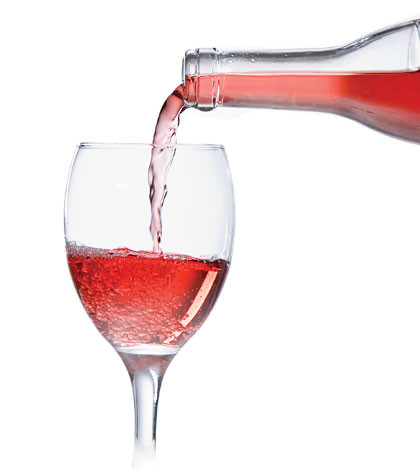Wine 101:

Audio By Carbonatix

The Many Shades of Rosé
by Ertan Sener
There are no standards of taste in wine, cigars, poetry, prose, etc. Each man’s own taste is the standard, and the majority vote cannot decide for him or in any slightest degree affect the supremacy of his own standard,” –Mark Twain, 1895. I remember this quote every time I taste wine, especially when I am choosing wine for others to enjoy. The one style of wine that is becoming easier and easier to suggest, but still might get a pause and a raised eyebrow when suggested is…rosé. No, no, no…not that sweet pink stuff that you have to get when your Great Aunt comes over for the holidays (and even that is okay, refer to the opening quote!), but that wonderful, dry, refreshing wine, when chilled, is the bridge of enjoyment between white and red. Let’s take a Wine 101 moment to explore the world of rosé in three easy steps.
Step 1: Sight
What does a wine maker have to do to get their wine to blush? You know what I mean…that perfect pink hue. Well, remember that the color of wine comes from the skin of the grapes, or the anthocyanins. So, no skin contact, no color in the juice. White wine can also be made from red grapes (consider Champagne). There are a number of ways to make rosé, but today there are two preferred methods. The first is to keep the skins in contact with the juice for a short time, a short maceration. This could be as little as a few hours up to a couple of days. Depending on the grape variety will depend on how long this process will take. Some grape varieties have higher anthocyanins than others. For example, in the south of France, where the mediterranian climate calls for the refreshing qualities of rosé, the grape most commonly used to make rosé is the red grape Grenache, since it is slightly lacking in anthocyanins. The second method is to actually bleed (saignée) small amounts of finished red wine into some finished white wine, to get the desired hue. The colors of rosé are very beautiful! They range the spectrum of pink from very light, almost unperceivable, to a light red. Well, time to move to the second step.
Step 2: Smell
Remember to take time to stop and smell the rosés! The overall smell of each wine is as unique as its color and taste profile. Get your nose really in there to discover all the wonders of rosé. The “nose”(the bouquet and aroma of the wine) can be as pretty as the color. You’ll be amazed at all the components the nose might contain. Wild Cherry, Pink Grapefruit, Raspberry, Black Pepper, Herbs, Pears, Peach, Passion Fruit, Orange Blossoms, Floral, Wild Strawberries… see what I mean? That is just a short list of perfumes that will jump out of the glass. Now, onto step three…
Step 3: Taste
Rosés are a great wine for this time of year when temperatures are rising, and it might feel too hot for a glass of red. The taste of rosé, depending on the grape variety or varieties used, could reflect the similar scents that are on the nose. Besides the reflection of great refreshing fruit flavors delivered to the palate from this dry wine, is the texture or mouth feel. Rosé is meant to be served chilled so it immediately perks up the palate, then the senses are surprised by the wonderful reflection of red fruit that the flavor has to offer. All this pleasure is contained in a liquid that has a creamy texture covering the taste buds in all its beauty. Rosé is a fantastic choice for an endless list of food pairings. Perfect pair for anything in the picnic basket, especially mayonnaise based dressings or spreads, such as chicken salad, egg salad, aiolis, deviled eggs…you get the picture. Rosés are great with salads and can stand up to many styles of salad dressings. Just because it’s pink, doesn’t mean it is not tough. Rosé can stand up to certain foods that are not wine friendly such as artichokes and asparagus! Flank steak, sure! Chicken, of course! Pastas with a light tomato cream sauce, um…YUM! There are really no bad pairings with rosé, just some that are better than others. Not just for hot weather, rosé is even great as a choice for the Thanksgiving table. When whites are not enough and reds are too much, I tend to think pink, rosé that is.
Rosé definitely has its place in the color wheel of wine. Have fun this season trying the variations on a theme with all the rosés there are to sample. Rosé is that no- brainer, when you are looking for a perfect wine to pair with an outdoor concert, grillin’ at a picnic, or just relaxing on the front porch this season. If the color pink makes you stop and think you are setting yourself up to be teased, remember the words of former rocker, now wine maker, Charles Smith, “Yes, You can drink rosé and still be BAD *SS!” Cheers!



